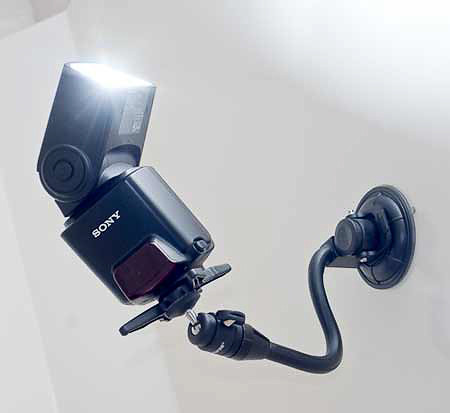
When I first saw the PlatinumPlus Click N’ Stick monopod I immediately thought it would be a great electronic flash holder. Sunpak, the manufacturer, markets it as flexible camera tripod, but I wasn’t too keen on trusting my dSLRs to the device. As a flash holder, however, I thought it had potential.
The Click N’ Stick is a bendable, flexible shaft with a mini ball-head tripod mount on one end. On the opposite end is a vacuüm suction cup designed to attach to any smooth, non-porous surface. Sunpak claims the unit can hold up to 1.8 pounds. You can arrange the supple shaft in any position, making for an extremely flexible mounting arrangement.
Sunpak offers a larger, Â flexible monopod they claim can handle light weight dSLRs; the Flexpod Click N’ Stick. Since I was only interested in holding an electronic flash, I haven’t tried and can’t give an opinion on the Flexpod model.
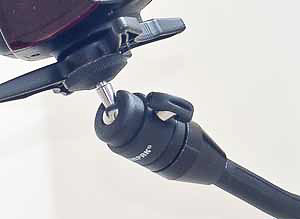
My initial tests with the basic Click N’ Stick weren’t very encouraging. I opened the blister pack and stuck the device to the nearest smooth surface; a glass top coffee table.
The suction mount has a nice lever arrangement that helps create a vacuüm to attach the rubber cup to the surface. As you push the lever down, it expels air to create suction. Lift the lever to break the seal and remove the Click N’ Stick.
It sticks…but for how long?
The device seemed sturdy enough, but after three minutes, it popped free and fell over. This was with nothing attached to the Click N’ Stick. It had come free of it’s own weight.
Hoping it might be a glitch, I followed the instructions carefully and made sure the glass and the rubber suction cup were clean. Then I attached the Click N’ Stick again. Once again, the suction lasted about three minutes before the device fell over.
Not good. I didn’t want to entrust my expensive electronic flashes to a device that might pop free and crash to the ground without warning.

I tried a few other surfaces with equally poor results. I finally tried attaching the Click N’ Stick vertically to a brass fireplace surround. While the metal surface was clean and smooth, the Click N’ Stick tumbled to the fireplace hearth in less than a minute.
I seriously thought about returning the Click N’ Stick for a refund. I decided to make one last attempt. The directions said nothing about moistening the suction cup, but everyone knows that these items stick much better if you apply water to them first. So I wet my hand in the sink and smeared water on the bottom of the rubber cup. Then I reattached the Click N’ Stick to the fireplace surround.
Click N’ Stick works better when wet
Five minutes, ten minutes, one hour. The Click N’ Stick remained fastened to the metal. The next morning, it was still firmly in place. Three days later, my wife politely asked me to remove “that thing†from the fireplace. Obviously, moistening the suction cup before applying it to a smooth surface made a dramatic difference in the device’s ability to stay in place.
Encouraged, I attached my HLV42AM flash to the plastic stand Sony provided and threaded the stand on to the Click N’ Stick. After carefully moistening the suction cup, I applied it to the vertical wall of a fiberglass shower stall.
Spare me the snarky comments about what kind of photos I was taking in the shower. I frequently shoot interior architectural shots for clients, and I needed some remote room lighting for a series of images.
With the HLV42AM set to wireless flash mode, I was pleased to be able to direct the remote flash wherever I needed it. The flash seemed very secure and the flexible arm allowed me to shift the unit to provide just the right amount of off-camera light.

I only had one accident. I repositioned the flash without re-moistening the rubber base, figuring the surface was clean and I was only moving the stand a few inches. Less than a minute after relocating the unit, the Click N’ Stick came free and the flash and stand clattered into the (fortunately dry) shower stall.
I got lucky – my HLV42AM suffered no damage, but the lesson was very clear. If you are going to hang expensive, fragile gear on the Click N’ Stick, you have to wet the base – every time.
The bendable shaft can be positioned in an infinite variety of positions. This allowed me to adjust the light output exactly where I wanted it. Once you twist the shaft into position, it stays where you put it, making for a completely adjustable monopod.
The SunPak Click N’ Stick only works on limited surfaces
I tried mounting the Click N’ Stick on a variety of surfaces, with varied results. The mounting surface must be smooth, flat and clean. Any texture can cause a vacuüm leak, which will quickly lead to a suction failure.
I found glass, metal, tile and fiberglass usually work well. The Click N’ Stick does not stick to painted walls, hard wood floors, wall paper or other similar surfaces. It might work on polished wood surfaces, but I cannot say for sure.
Even the best surfaces are iffy, however, if they aren’t flat. Many modern car windows, for instance, have curves which could prevent the suction cup from maintaining suitable vacuüm. A slight curvature would probably work, but too much of an arc will lead to suction failure.
I can’t really endorse the Click N’ Stick for most users. The risk of failure (and damage to equipment) is just too great. On the other hand, I am keeping my Click N’ Stick for use as a remote flash mount. I can live with the requirement (and it is a requirement) to moisten the suction cup before use.
Even at that, however, there is always a chance of a suction failure. If there was any warning before hand, which could alert you that the device was ready to give way, I would be more comfortable with the unit. But there is no warning.
Then there is the problem of finding a suitable surface for the Click N’ Stick. For instance, I frequently take my camera gear on nature hikes. There are almost no naturally occurring objects that would provide a suitable surface for this monopod. So for outdoor, wilderness use, the Click N’ Stick would be fairly useless.
Indoors or in an urban environment, however, the Click N’ Stick can offer the ability to place light wherever you want…provided there is a suitable surface.
I looked up the Click N’ Stick on several user review sites. It constantly gets poor reviews, with warnings such as “do not buy this†or “complete waste of money.†Most users report the same problems with suction failures as I experienced.
The Click N’ Stick isn’t the only suction cup tripod holding device available. Companies such as Cullmann, Manfrotto, Matthews and Visual Departures provide more robust solutions that garner much better reviews. Of course these models cost considerably more than Sunpak’s Click N’ Stick. The old adage that you “get what you pay for†apparently applies here.
Dampening the suction cup directly before use definitely creates a superior seal. I fear, however, that there will always be some concern that the suction may fail and my equipment may take a dive. For this reason, I will never attach as dSLR to the Click N’ Stick, even if it fits within the weight Sunpak has outlined. The risk is too great.
I will use caution when using the Click N’ Stick. If possible, I may even rig a safety cord to save my flash if the Click N’ Stick gives way. However, the Click N’ Stick is far easier to carry than my telescoping flash stands and if the surfaces are right it is more versatile. For that reason, I will continue to use the Click N’ Stick when appropriate.
Sunpak PlatinumPlus Click N’ Stick Monopod
PROS:
Light weight
Easily positioned
Ball head attachment
Flexible shaft stays the way you bend it
CONS:
Risk of suction failure without warning
Unit only works on a limited number of surfaces
Requires moisture to ensure the vacuum seal works
Availability:
The PlatiumPlus Click N’ Stick is available from the usual photo supply soruces, including Amazon, B&H Photo and Adorama. It was available at Radio Shack, but I don’t see it listed on their website any longer, possibly because of negative customer feedback.
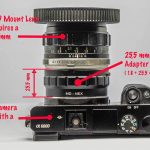
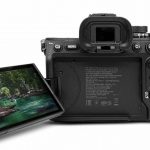
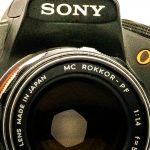


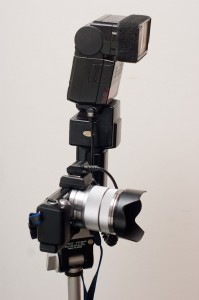
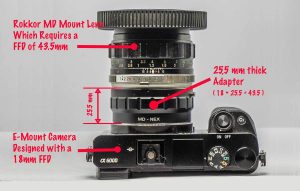

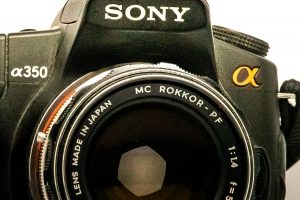

gives utilize a superb ınternet site decent Gives many thanks for the working hard to help out myself
Been looking at doing some SEO and improving the web design on my site for a while, so this post has been very useful. Easy read also, so thanks!